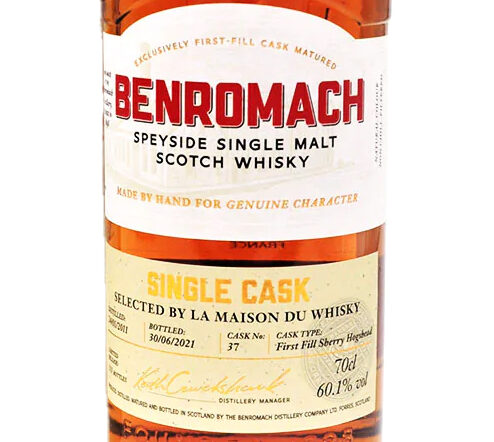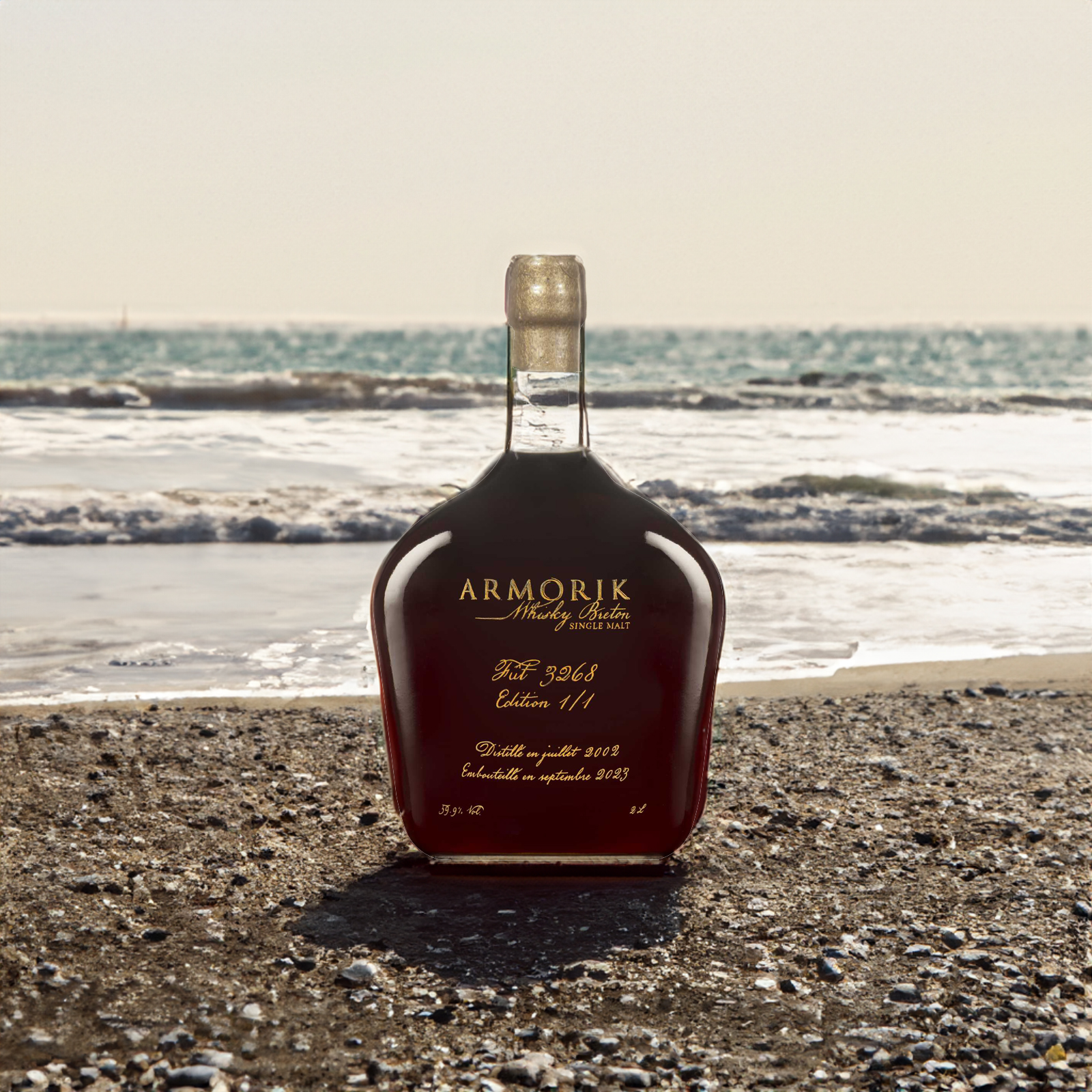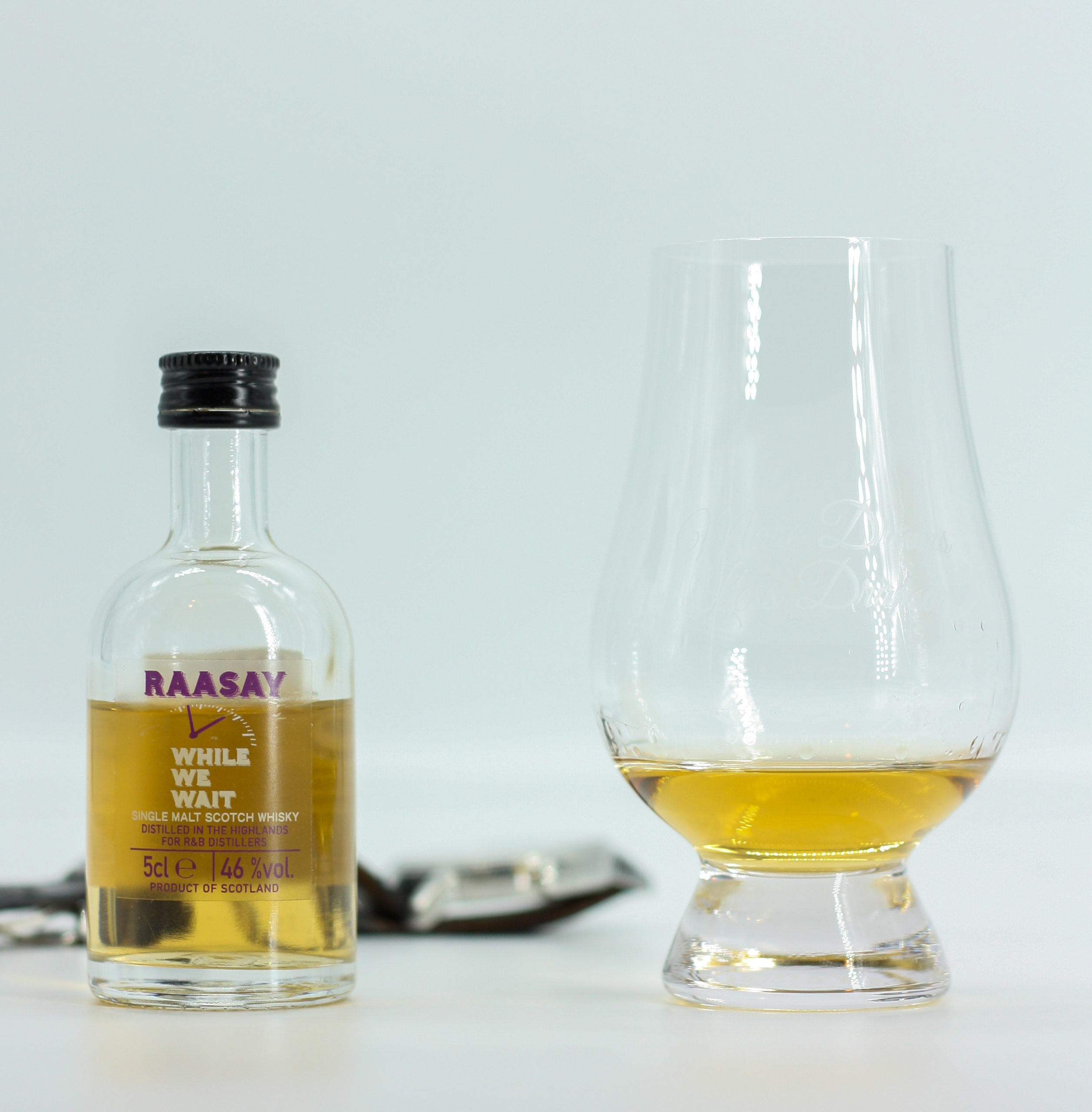In 2014, Warenghem Distillery introduced the inaugural edition of Armorik Maître de Chai. Typically, this expression involved blending two oloroso sherry butts, resulting in a limited production of approximately 1800 to 2000 bottles, all bottled at 46% ABV. I have a distinct memory of tasting one of these editions a few years ago, although the precise bottling year eludes me. It happened during a vertical tasting of Armorik whiskies at a whisky store in Rennes, a place that, sadly, no longer exists. This Maître de Chai expression continued its run until 2017. Following that, there was a notable absence of any new Maître de Chai releases. Fast forward to 2023, and Warenghem has unveiled a fresh iteration of Armorik Maître de Chai. However, the only thing this new version shares with its predecessors is the name; the recipe has undergone a significant transformation, as we’re going to see…
Armorik Maître de Chai (2023) Review
As previously mentioned, the 2023 edition of Armorik Maître de Chai shares its name with its predecessors, but little else. No longer confined to a mere combination of two Oloroso sherry butts, Maître de Chai has undergone a significant transformation. Warenghem entrusted their warehouse manager (Maître de Chai in French, hence the name), Erwan Lefebvre, with complete creative freedom to craft a new release, utilising the full range of casks available in their inventory. Lefebvre meticulously blended this expression using ten casks, each with distinct origins, previous contents, and distillation dates.
Among the eclectic mix were casks that once held Savennières (a dry white wine from the Loire Valley made with Chenin Blanc grapes), Pineau des Charentes (a fortified wine from the Charentes region of France), Banyuls (a dessert wine from the Catalan Pyrénées), Portuguese wine (the cask was subsequently treated – shaved, toasted, and rejuvenated, known as STR), Bourbon, and Oloroso sherry (some made from American Oak, others from Spanish Oak). There was even a cask crafted from virgin French oak. For more details regarding the distinction between first fill or refill casks, the distillation dates of the contents, and the unique cask numbers, I’ll redirect you to Warenghem’s website (only in French for that page I fear).
The whisky, distilled between 2009 and 2019 depending on the cask, led to an edition likely aged around four years (with the youngest spirit distilled in March 2019). After meticulous blending, the final product was bottled at 50% ABV, resulting in 2,500 bottles. Notably, this edition was spared chill filtration and artificial colouring. Priced at €80.80 in France, it is available for purchase directly from Warenghem’s online store, although it can be also be found at a more affordable price in countries like the Netherlands.

Colour:
Chestnut.
Nose:
Neat: The influence of alcohol and wine is notably pronounced, creating an intense nose with a myriad of aromas. Breaking it down, the initial wave reveals a variety of fruits, including pear, peach, apple, plum, redcurrant, along with subtle traces of grapefruit and grape. The wine influence becomes prominent, resembling Banyuls more than white wines, and even reminiscent of port. A hint of spices lingers in the background, with notes of allspice, along with a touch of cinnamon and nutmeg. The winey character slightly overshadows the other elements but maintains a harmonious and balanced profile.
With water: Interestingly, the nose becomes slightly more spirited, perhaps indicating a soft dissonance from the younger components of this whisky.
Palate:
Neat: The initial taste is characterised by dark fruits and robust spices, with a pronounced influence of Oloroso sherry. Notes of dark chocolate, coffee, plum in honey, cherries, and a hint of orange marmalade mingle with a bold dash of pepper and chili powder. Surprisingly, fresh herbaceous hints of menthol and eucalyptus emerge as well as vanilla, providing an unexpected but balancing touch. However, there’s a noticeable winey bitterness, slightly overpowering, accompanied by a fizzy sensation on the mouthfeel. The influence of the new French oak cask becomes more apparent here than on the nose.
With water: The palate transforms, revealing a subtle saltiness and nuttiness, akin to salted peanuts and cashew nuts.
Finish:
Finish: The flavours experienced on the palate persist, remaining fully present for a prolonged duration in the finish. A gentle warmth gradually travels down your throat, lingering even moments after swallowing. Subtle hints of After-Eight chocolate and a medley of red-fruit jam, including cherry, redcurrant, strawberry, and raspberry, endure, leaving a lasting impression.
Comments:
After examining the diverse cask bill of the Armorik Maître de Chai 2023 edition, I approached with a hint of concern. The blending of various cask types can be a tricky endeavour, often resulting in imbalances (a case in point being the Jura Seven Wood). However, in this instance, I was pleasantly surprised. Erwan Lefebvre skilfully achieved harmony and balance, allowing different notes and profiles to contend for dominance while ensuring they all remained in check. The result is a harmonious collaboration, offering a wealth of exploration both on the nose and palate, and even with a pipette in hand if you so desire. Excellent work and excellent whisky.
Rating: 87/100
Sample provided by Warenghem Distillery.



